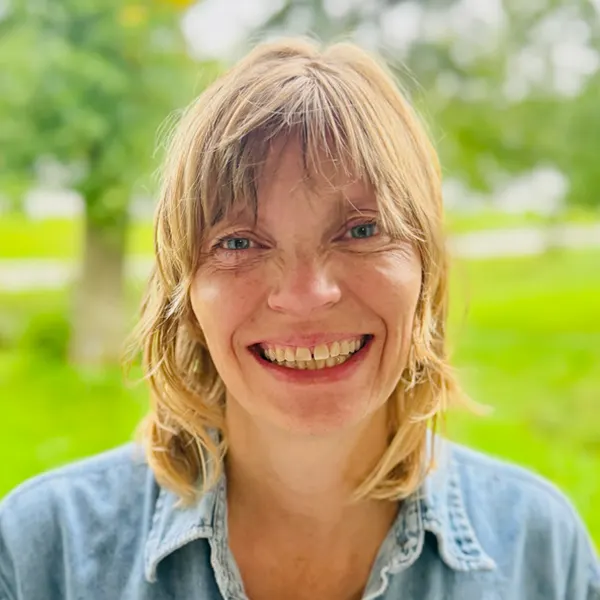TL;DR: CURE continues to pursue democracy-driven solutions to solve big problems—because the places we love the most and call home aren’t somewhere over the rainbow; they are right here.
But—because you did take the time to open this jam-packed blog—stick with us for the next 4 minutes and learn more about historic rural clean energy funding, the CO2 pipelines fight heating up, a controversial power plant, and much more.
A New ERA for Rural Clean Energy Funding!
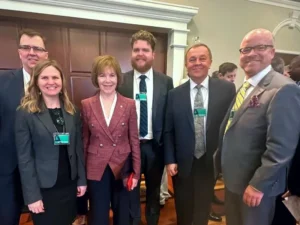
In May, CURE celebrated the rollout of the New ERA program at the White House. Staff from the USDA’s Rural Utility Service and rural advocates from across the country shared program details and the impacts of this historic investment on rural communities across the country.
“This marks the end of a five-year chapter in the nearly 100-year saga of rural electrification. When co-ops and rural democracy advocates work together, we win big for rural America. Today we have a historic opportunity to create rural jobs once again, save rural residents money, and take action on climate.”
– Erik Hatlestad, CURE
Unfortunately, New ERA, PACE, and REAP funds are already under attack from the U.S. House Appropriations Committee, which is looking the slash this investment before it even reaches rural communities. Read more about the proposed New ERA cuts.
CO2 Pipelines
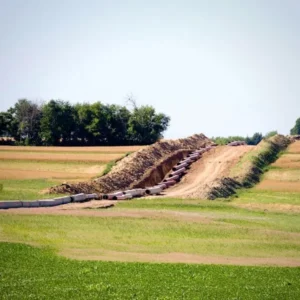 This spring, the Minnesota Public Utilities Commission (PUC) and Department of Commerce held the first public meetings for Summit Carbon Solutions’ route permit application for the Otter Tail & Wilkin County 28-mile segment of their much larger pipeline project proposed for Minnesota. CURE was there with impacted landowners and community members, asking questions and making sure agency staff heard the review of this first-of-its-kind project needs to address the full range of environmental, health, and safety concerns and consider a range of route options (including no pipeline at all), not just the one that Summit prefers.
This spring, the Minnesota Public Utilities Commission (PUC) and Department of Commerce held the first public meetings for Summit Carbon Solutions’ route permit application for the Otter Tail & Wilkin County 28-mile segment of their much larger pipeline project proposed for Minnesota. CURE was there with impacted landowners and community members, asking questions and making sure agency staff heard the review of this first-of-its-kind project needs to address the full range of environmental, health, and safety concerns and consider a range of route options (including no pipeline at all), not just the one that Summit prefers.
The PUC also accepted written comments about the proposed Environmental Impact Statement (EIS). CURE was joined by many of our Minnesotan and national partners and over 100 members of the public who submitted comments demanding a thorough review. Although Summit is only currently applying for a small part of their route in Otter Tail and Wilkin counties, CURE continues to argue on behalf of all Minnesotans that the EIS must include the entire 240 miles of Summit’s project in Minnesota.
Meanwhile, we’re keeping our eyes peeled for Summit’s next permit applications, which they’ve said themselves are imminent. Summit’s comments at a recent Kandiyohi County board meeting revealed they plan to submit applications for Martin County by July and the longest branch from Kandiyohi County to the Iowa border by the end of 2023.
 In June, CURE joined environmental advocates, community members, landowners, and pipeline safety experts from across the Midwest in Des Moines, IA, to attend the U.S. Department of Transportation’s Pipeline and Hazardous Materials Safety Administration’s (PHMSA) “Public Meeting on Carbon Dioxide Pipeline Safety.”
In June, CURE joined environmental advocates, community members, landowners, and pipeline safety experts from across the Midwest in Des Moines, IA, to attend the U.S. Department of Transportation’s Pipeline and Hazardous Materials Safety Administration’s (PHMSA) “Public Meeting on Carbon Dioxide Pipeline Safety.”
It was clear from this meeting and conversations with federal regulators that there is a clear gap in information and understanding of the impacts of CO2 pipelines and what it will take to keep communities safe.
CURE joins our allies across the country in calling for a moratorium on CO2 pipeline construction and permitting until PHMSA updates its current inadequate rules. Read more about CO2 pipeline safety concerns.
GRE’s Cambridge Peaker Plant 🤯
 CURE continues to call attention to Great River Energy’s problematic proposal to convert their gas-fired peaker plant in Cambridge, MN, to make it even more polluting. Last year, GRE asked the Minnesota Public Utilities Commission (PUC) for a “minor alteration” to its existing permit for its peaking power plant in Cambridge. But there would be nothing “minor” about this—GRE wants to convert the current gas-fired Cambridge facility to “dual fuel,” burning both fossil gas AND an even dirtier fossil fuel—diesel fuel oil.
CURE continues to call attention to Great River Energy’s problematic proposal to convert their gas-fired peaker plant in Cambridge, MN, to make it even more polluting. Last year, GRE asked the Minnesota Public Utilities Commission (PUC) for a “minor alteration” to its existing permit for its peaking power plant in Cambridge. But there would be nothing “minor” about this—GRE wants to convert the current gas-fired Cambridge facility to “dual fuel,” burning both fossil gas AND an even dirtier fossil fuel—diesel fuel oil.
As CURE’s Sarah Mooradian told MPR—
“This is not the clean energy future that we need…”
CURE has raised health and environmental concerns about this proposal and why it’s inconsistent with Minnesota’s clean energy ambitions. Still, the long and short is this: in 2023, there is no justification for relying on the dirty and expensive energy generated by fossil fuel peaker plants, let alone investing millions to make them even more polluting. Neither the communities who live near this project, GRE’s member-owners, nor our climate can afford it.
CURE’s 2023 Rural Electric Co-op Scorecard
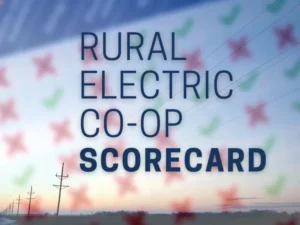 In mid-May, CURE released the 2023 Rural Electric Co-op Scorecard. The Scorecard looks at how well Minnesota’s electric co-ops demonstrate online transparency. Co-op member-owners are co-op’s most important resource, and member-owners must be informed to be engaged.
In mid-May, CURE released the 2023 Rural Electric Co-op Scorecard. The Scorecard looks at how well Minnesota’s electric co-ops demonstrate online transparency. Co-op member-owners are co-op’s most important resource, and member-owners must be informed to be engaged.
Top takeaways:
- RECs made a 93% improvement
- Co-ops that engage with CURE are more transparent
- Co-ops still need to improve financial transparency.
- Co-ops need to step up communications about the historic $10 billion Inflation Reduction Act clean energy funding
Read more about the REC Scorecard insights.
Upper Sioux Community | Land Back
 In May, legislation was signed into law that returns the land of the Upper Sioux Agency State Park (USASP) to the Upper Sioux Community Pezihutazizi Oyate in Southwestern Minnesota. This is an issue that the Upper Sioux Community has been working on for over 20 years, and these 1,290 acres hold immense significance for the Upper Sioux Community. The land contains ancestral burial grounds and an annual sacred celebration, making it an integral part of their cultural heritage.
In May, legislation was signed into law that returns the land of the Upper Sioux Agency State Park (USASP) to the Upper Sioux Community Pezihutazizi Oyate in Southwestern Minnesota. This is an issue that the Upper Sioux Community has been working on for over 20 years, and these 1,290 acres hold immense significance for the Upper Sioux Community. The land contains ancestral burial grounds and an annual sacred celebration, making it an integral part of their cultural heritage.
Read more about a community discussion about the land transfer this spring and watch the meeting. Learn more about the Land Back movement.
ICYMI – MN Legislative Session | Wrap-up
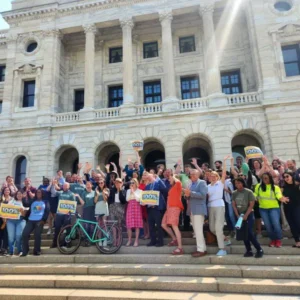 The 2023 Minnesota legislative session was historic and transformative—a session that enacted game-changing investments and policies to benefit the people and families of Minnesotans everywhere.
The 2023 Minnesota legislative session was historic and transformative—a session that enacted game-changing investments and policies to benefit the people and families of Minnesotans everywhere.
ICYMI: Read CURE’s wrap-up of this monumental legislative session.


